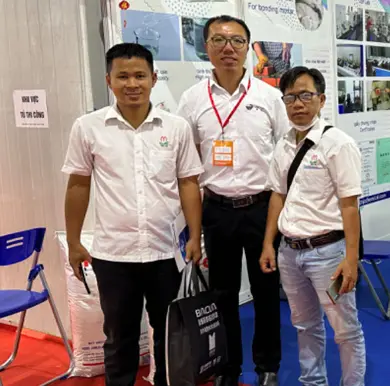
Nov . 08, 2024 18:45 Back to list
hpmc tile adhesive
Understanding HPMC Tile Adhesive A Comprehensive Overview
Hydroxypropyl Methylcellulose (HPMC) is a widely used chemical compound in various construction applications, particularly in the formulation of tile adhesives. HPMC is a non-ionic, water-soluble polymer derived from cellulose, a natural polymer found in plant cell walls. Its unique properties make it an ideal additive in tile adhesives, enhancing their performance significantly.
What is HPMC?
HPMC is a modified cellulose that has been chemically treated to improve its water retention, adhesion, and workability. It appears as a white powder and is odorless and tasteless. In construction, it is valued for its ability to improve the properties of cement-based mortars and adhesives.
Role of HPMC in Tile Adhesives
When incorporated into tile adhesives, HPMC serves multiple functions
1. Water Retention One of the key features of HPMC is its excellent water-retention capacity. This property ensures that the adhesive remains workable for an extended period after application, allowing for a longer open time. This is especially important in tile installation, as it gives the installer more flexibility to adjust and position tiles before the adhesive begins to set.
2. Improved Adhesion HPMC enhances the adhesive strength of tile mortars, ensuring that tiles adhere well to various substrates. This is crucial for preventing tiles from shifting or popping off after installation, which can be particularly problematic in high-traffic areas or bathrooms.
hpmc tile adhesive

3. Thickening Agent As a thickener, HPMC helps achieve the desired viscosity of tile adhesives. This makes the adhesive easier to spread and prevents it from dripping off vertical surfaces, ensuring a uniform application.
4. Workability The addition of HPMC improves the workability of tile adhesives, making them smoother and easier to handle. This ease of application is vital for both professional installers and DIY enthusiasts, as it allows for a more efficient and less labor-intensive process.
5. Resistance to Cracking Tile adhesives formulated with HPMC exhibit reduced risk of cracking once cured. This durability is essential, particularly in areas subject to fluctuations in temperature and humidity, which can cause expansion and contraction of building materials.
Environmental Considerations
As environmental sustainability becomes increasingly important in construction, HPMC presents an advantageous option. Being derived from natural cellulose, it is biodegradable and non-toxic, making it a safer choice for both the environment and human health. Additionally, the use of HPMC can lead to lower levels of volatile organic compounds (VOCs) in tile adhesives, contributing to better indoor air quality.
Conclusion
HPMC tile adhesive represents a significant advancement in construction materials, offering numerous benefits that enhance tile installation processes. Its exceptional water retention, adhesion enhancement, and improved workability make it a preferred choice for both manufacturers and installers. Given its environmentally friendly profile, HPMC is poised to become an even more popular choice as the industry shifts towards more sustainable building practices.
In conclusion, understanding the role of HPMC in tile adhesives not only highlights its importance in ensuring quality installations but also underscores the growing trend toward eco-friendly materials in the construction industry. As demands for performance and sustainability continue to rise, the future of tile adhesives looks promising with HPMC at the forefront.
-
Versatile Hpmc Uses in Different Industries
NewsJun.19,2025
-
Redispersible Powder's Role in Enhancing Durability of Construction Products
NewsJun.19,2025
-
Hydroxyethyl Cellulose Applications Driving Green Industrial Processes
NewsJun.19,2025
-
Exploring Different Redispersible Polymer Powder
NewsJun.19,2025
-
Choosing the Right Mortar Bonding Agent
NewsJun.19,2025
-
Applications and Significance of China Hpmc in Modern Industries
NewsJun.19,2025







